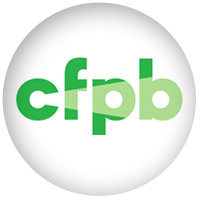
Anyone who works with sales people knows that their ultimate incentive is their commission check. Since the first time that “sales” was identified as a profession, we’ve been paying the people who sell based primarily on their results.
This has worked well — but things are starting to change. The drive for results at the expense of all other considerations is running smack dab into the new realities of customer experience and businesses’ deepening dependence on long customer lifecycles as the drivers of profitability.
It has become critical to align compensation with the expectations of customers, as well as the objectives of the organization.
The companies that understand this are mixing up compensation to drive sales behaviors that point in a new direction for sales. The ones that don’t… well, they can head in new directions, too. Mostly downhill.
Squandering Lifelong Relationships
Wells Fargo recently provided an example of that lack of understanding when news broke that more than 5,300 employees had been fired in a scandal that involved illegal behavior: the creation of nearly 2 million customer bank and credit card accounts without the customers’ permissions.
The practice will cost the company upwards of US$190 million outright. That’s a drop in the bucket for a company that made $86.1 billion in revenues in 2015 — but the cost in damage to the brand surely will expand beyond that amount.
The company’s 2015 annual report proudly — and now ironically — wears the legend, “Wells Fargo: Earning Lifelong Relationships.” How many of those relationships has the company destroyed? We’ll see in the next few annual reports.
The genesis of this scandal reportedly was an internal initiative called “Gr-eight,” which made it a goal to increase the average customer’s number of financial products or accounts from six to eight. (In the wake of the scandal, the bank announced this initiative would end Jan. 1.)
While the objective made sense on paper, the way sales people were allowed to meet the objective did not: They simply created new accounts for existing customers without their knowledge, moving money around so that accounts could become overdrawn — or, in the case of credit cards, delinquent — leading to some customers being docked for fees.
It might have been understandable — although still reprehensible — if the bank had been raking in the fee revenue. However, just 85,000 of the fake accounts incurred fees (which amounted to about $2 million), and just 14,000 of unauthorized credit cards incurred fees (totaling about $400,000), according to a Consumer Financial Protection Bureau complaint.
So, for a mere $2.4 million in additional revenue, Wells Fargo has given itself an impressive black eye.
Fee-Generating Machine
How this could take place without the bank catching it — or wanting to catch it — goes to the heart of Wells Fargo’s incentivization program. It created a goal that many felt was unrealistic, and it provided sales people with a means to game the system. I wonder how many of the 5,300 fired employees received bonuses based on their sudden prowess at upselling their customers.
Most concerning is that the first firings took place in 2011 and continued through March 2016 — meaning that this behavior was detected more than five years ago, and yet safeguards were not put in place to eradicate it.
“The result is that Wells Fargo has engineered a virtual fee-generating machine, through which its customers are harmed, its employees take the blame, and Wells Fargo reaps the profits,” alleges a lawsuit filed by the state of California.
In other words, as long as the penalty fees were coming, Wells Fargo itself wasn’t motivated to make changes — a terrible condemnation of the bank’s ethics.
That attitude permeated deep into the sales management culture. Sales managers created a nightmarish, pressure-driven environment, according to some former employees, who said they were urged to press family members to open new accounts in order to reach goals.
What did Wells Fargo miss — besides a basic understanding of ethical behavior?
1. Hire responsible employees.
It seems like a no-brainer, especially in heavily regulated industries, but the pressure to grow revenue can lead to poor hiring decisions. You need your sales staff to be trustworthy — now more than ever.
Reckless employees not only can get you into legal hot water and endanger the future of your business, but also do smaller things (perhaps less extra-legal) that damage trust with customers and ruin your chances of keeping them over the long term, eliminating profits in the process.
2. Set reasonable sales goals.
A narrow focus on goals can result in “distorted risk preferences, a rise in unethical behavior, inhibited learning, corrosion of organizational culture, and reduced intrinsic motivation,” says a study from the Academy of Management.
Setting goals based on broader objectives helps ensure that one goal isn’t achieved at the cost of the broader business. It also relieves the sales staff from feeling pressured to achieve a goal at all costs.
3. Use analytics — not only to understand the customers you want, but also the ones you have.
Analytics should have revealed that many previously responsible customers who opened new accounts suddenly became overdrawn or delinquent in payments. With more than 500,000 phony credit card accounts and 1.5 million fake bank accounts, the patterns should have been apparent — if someone had been looking for them.
4. Make sure a “Customer Centric Culture” Extends Beyond the Marketing Collateral.
Most people who know and interact with their customers would be loath to engage in Wells Fargo-style behaviors, simply because they would better know the people they were harming.
However, there’s still a lot of room between customers and various parts of most business organizations — and that space allows employees to treat customers as faceless accounts, making it easier for abuse to take place.
5. Ask Customers About Their Experiences With You.
Customer feedback is a vital part of the modern seller-buyer relationship, to the point where some organizations are building customer scoring of sales performance into the bonus structure.
That allows sales to sell more like customers want them to sell, for starters. In the Wells Fargo case, it also would have triggered red flags early, when customers were asked to rate account-opening experiences they simply did not have.





















































